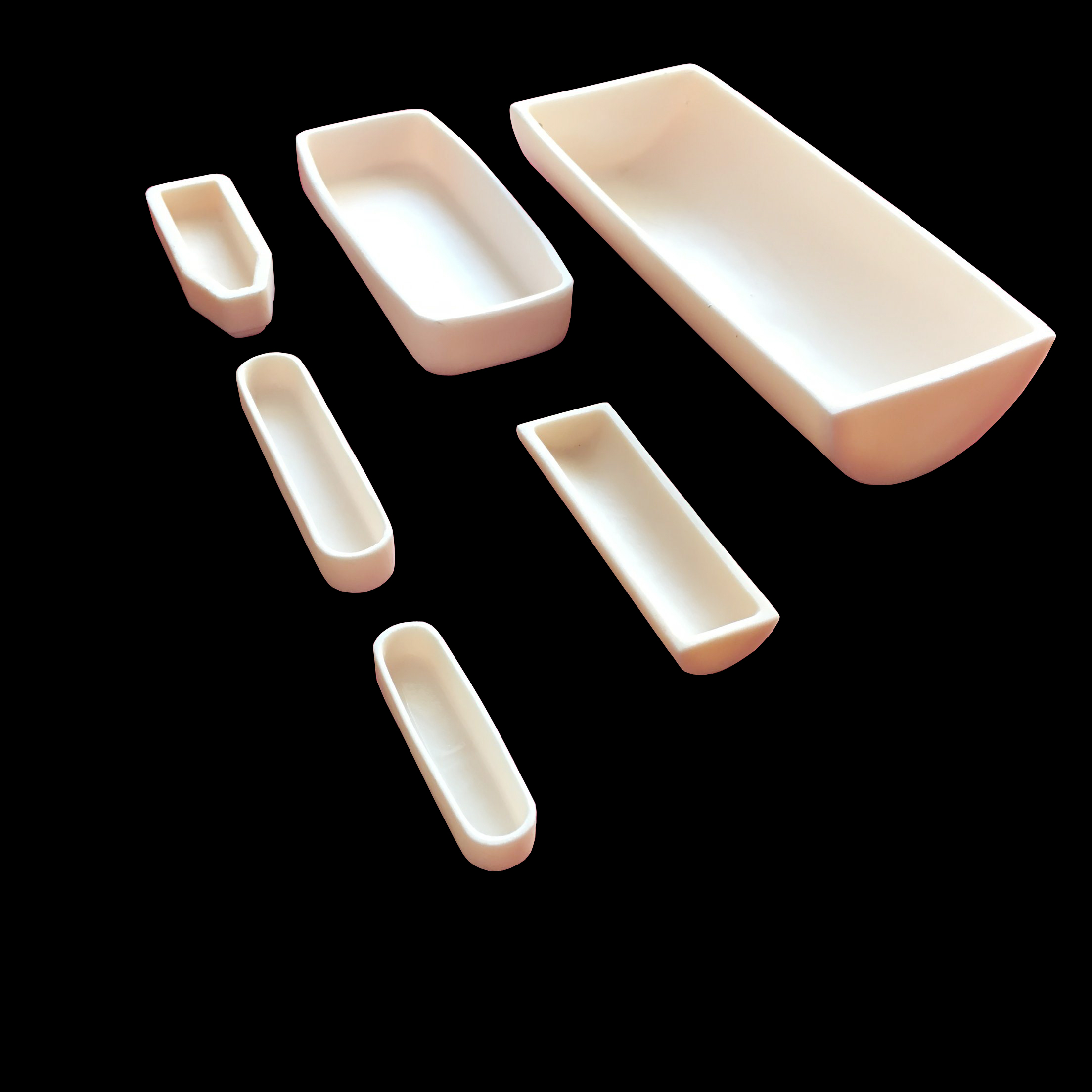What Are Alumina Ceramic Boats and How Do They Work in Tube Furnaces? Exploring Alumina Ceramic Boat Applications

Alumina ceramic boats are a critical component in various high-temperature applications, particularly in tube furnaces. These specialized ceramic containers are crafted from high-purity alumina (Al₂O₃), offering a unique combination of properties that make them ideal for demanding environments. This article delves into the characteristics of alumina ceramic boats, their functionality in tube furnaces, and their wide-ranging applications.
Alumina ceramic boats are typically rectangular or elongated containers designed to hold materials during thermal processing. The high alumina content, often exceeding 99%, ensures superior thermal stability, mechanical strength, and chemical resistance. These properties are crucial for processes that require consistent and reliable performance at elevated temperatures.
High Melting Point: Alumina ceramics can withstand temperatures up to 1750°C (3182°F), making them suitable for high-temperature applications.
Thermal Shock Resistance: The ability to endure rapid temperature changes without cracking or failing.
Chemical Inertness: Resistance to chemical reactions with most materials, including acids and alkalis, ensuring purity and preventing contamination.
Mechanical Strength: High resistance to wear and mechanical stress, enhancing durability.
Tube furnaces are cylindrical heating devices used extensively in laboratories and industrial settings for material synthesis, heat treatment, and thermal analysis. Alumina ceramic boats play a pivotal role in these furnaces by securely holding samples or materials during the heating process.
The operational process can be outlined as follows:
Preparation: The sample or material to be processed is placed inside the alumina ceramic boat. The boat is chosen based on the size and nature of the material.
Insertion: The boat is then carefully inserted into the tube furnace, which is designed to maintain a uniform temperature along its length.
Heating: The furnace is gradually heated to the desired temperature. Alumina ceramic boats can endure the high temperatures without deforming or reacting with the sample.
Thermal Processing: The material undergoes thermal processing, such as calcination, sintering, or annealing. The alumina boat ensures that the sample remains stable and uncontaminated.
Cooling and Removal: After the process is complete, the furnace is allowed to cool down. The alumina boat is then removed, and the processed material is retrieved for further analysis or use.
Applications of Alumina Ceramic Boats
The versatility of alumina ceramic boats makes them indispensable in various fields:
Material Science Research: Used in the synthesis and characterization of new materials, including ceramics, metals, and composites. Alumina boats facilitate the controlled heating and cooling processes necessary for creating novel materials with specific properties.
Chemical Processing: In chemical laboratories, alumina boats are employed for reactions requiring high temperatures and resistance to corrosive substances. They ensure the purity and integrity of chemical compounds during thermal treatments.
Thermal Analysis: In analytical chemistry, alumina boats are used in techniques such as thermogravimetric analysis (TGA) and differential thermal analysis (DTA). These techniques involve heating samples to study their thermal stability, composition, and decomposition mechanisms.
Industrial Manufacturing: In industries like electronics and metallurgy, alumina ceramic boats are used for heat treatments, such as annealing and sintering of electronic components, metal powders, and ceramic products.
Environmental Testing: Alumina boats are used in the analysis of environmental samples, such as soil and waste materials, by heating them to release and measure volatile components.
Pharmaceutical Industry: In the production of pharmaceuticals, alumina boats are used in the synthesis of active ingredients and the preparation of intermediates under high-temperature conditions.
Conclusion

